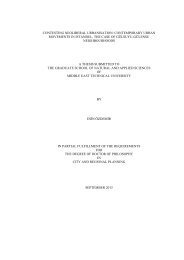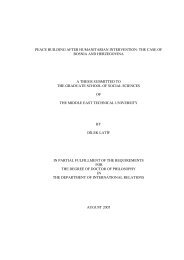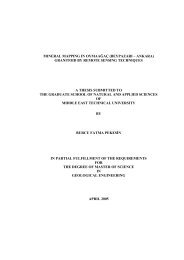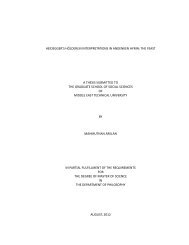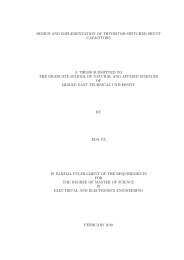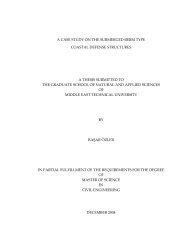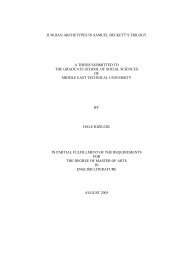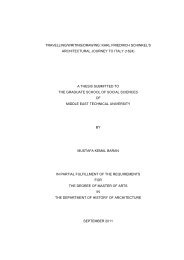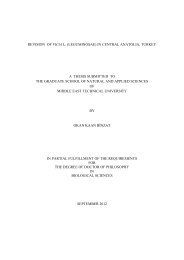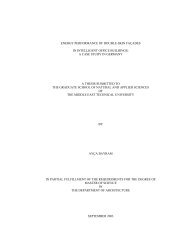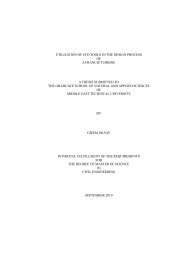View Original - Middle East Technical University
View Original - Middle East Technical University
View Original - Middle East Technical University
Create successful ePaper yourself
Turn your PDF publications into a flip-book with our unique Google optimized e-Paper software.
transactions are really decentralized by monetary exchange, new compatibility<br />
problems emerge due to the formation of expectations, the uncertainty about the use<br />
of the money balances and financial assets, and of course the role of time in<br />
investment decisions. The equivalent of the auctioneer is then a well organized<br />
system of payment’(1996b11). When there is such a ‘well organized’ credit and<br />
monetary regime, then ‘markets can be organized, provided that the more powerful<br />
actors have an interest in implementing them’(Boyer 2001:80). Thus, the second<br />
basic institution is forms of competition.<br />
3.4 Boyer on Institutional Complementarity and Hierarchy<br />
Regulation Theory first focused more on analysing capitalism’s stages than on<br />
the variety of its forms at a particular moment in time. However, further<br />
research into the growth regimes that were likely to succeed Fordism, ... ,<br />
revealed the coexistence of many different forms of capitalism. Analysis<br />
subsequently went on to cover modes of regulation and institutional<br />
architectures(Boyer 2005:511).<br />
As analysts of the structural change within capitalism, regulationists have been<br />
particularly fastidious about the exceptional ‘dynamic efficiency’ and growth<br />
throughout the postwar years in industrialised economies, structural terms of which<br />
now contrast with the curious parti pris about market-led growth and pro-market<br />
reform efforts throughout the ‘les vingt douloureuses’. The solitary effect of<br />
Taylorism on productivity growth is elusive, it after all had had such an effect before<br />
postwar model of growth. However in the 1920s and 1930s, corporate capital had<br />
generally been recalcitrant about large-scale industrial employment and real wage<br />
growth along its systematic resort to Taylorist methods and on the basis of the broadly<br />
competitive mechanisms at large at the time. Mass production without mass<br />
consumption was thereby scarcely galvanic upon macroeconomic growth; the very<br />
market-based structure of production and demand indeed stirred up economic<br />
stagnation and price competition. The structure of productivity and real wages since<br />
the 1950s contrasted with that of the formerly stagnant wages with productivity<br />
growth along Taylorist mechanisation throughout the interwar years. Perturbations<br />
65



